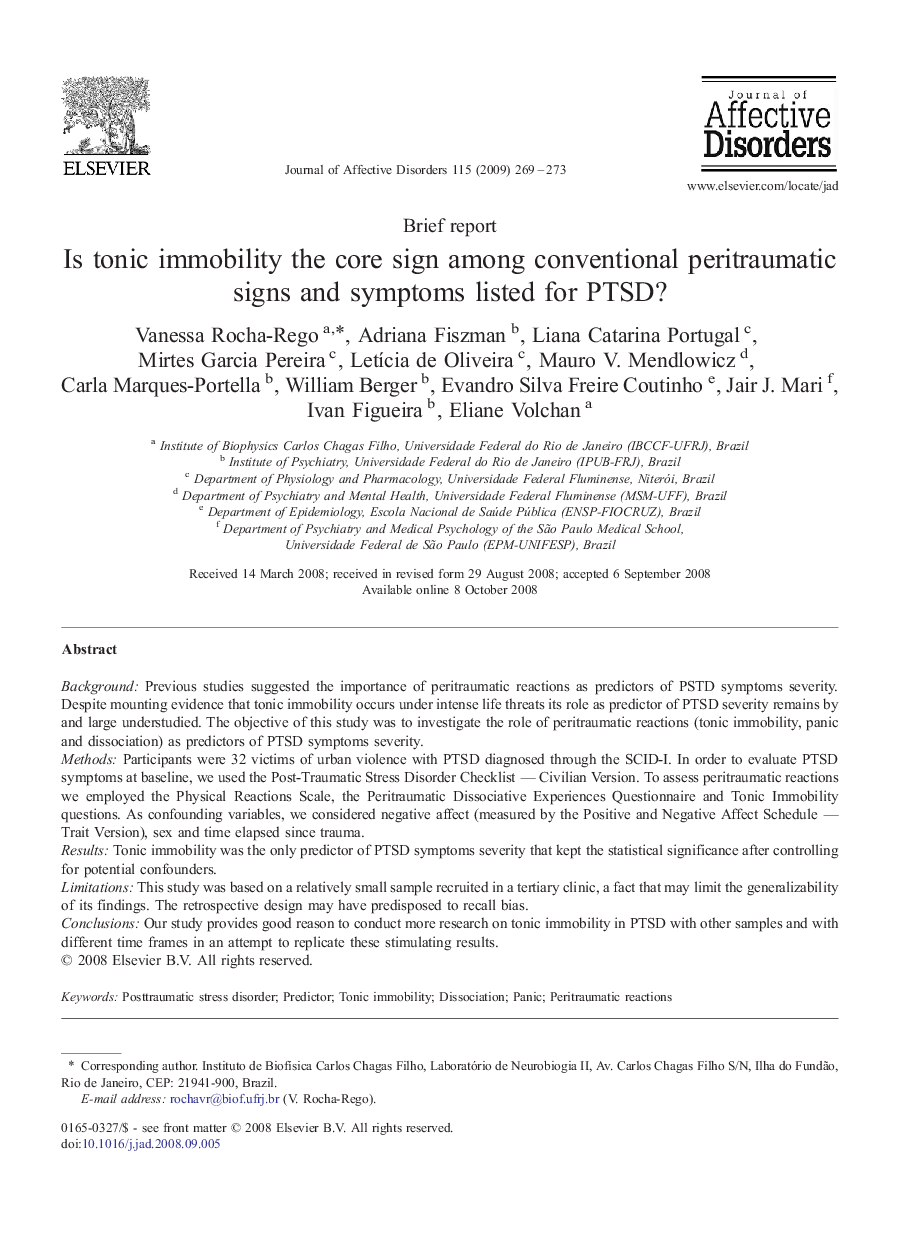| Article ID | Journal | Published Year | Pages | File Type |
|---|---|---|---|---|
| 6236791 | Journal of Affective Disorders | 2009 | 5 Pages |
BackgroundPrevious studies suggested the importance of peritraumatic reactions as predictors of PSTD symptoms severity. Despite mounting evidence that tonic immobility occurs under intense life threats its role as predictor of PTSD severity remains by and large understudied. The objective of this study was to investigate the role of peritraumatic reactions (tonic immobility, panic and dissociation) as predictors of PTSD symptoms severity.MethodsParticipants were 32 victims of urban violence with PTSD diagnosed through the SCID-I. In order to evaluate PTSD symptoms at baseline, we used the Post-Traumatic Stress Disorder Checklist - Civilian Version. To assess peritraumatic reactions we employed the Physical Reactions Scale, the Peritraumatic Dissociative Experiences Questionnaire and Tonic Immobility questions. As confounding variables, we considered negative affect (measured by the Positive and Negative Affect Schedule - Trait Version), sex and time elapsed since trauma.ResultsTonic immobility was the only predictor of PTSD symptoms severity that kept the statistical significance after controlling for potential confounders.LimitationsThis study was based on a relatively small sample recruited in a tertiary clinic, a fact that may limit the generalizability of its findings. The retrospective design may have predisposed to recall bias.ConclusionsOur study provides good reason to conduct more research on tonic immobility in PTSD with other samples and with different time frames in an attempt to replicate these stimulating results.
